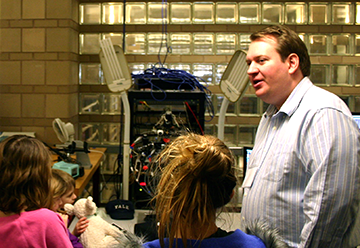Robot Models of Self: Justin Hart

What does it mean to be self-aware?
In robotics, the necessity to reason about the physical structure and capabilities of the machine is inescapable. Parameters describing the robot’s sensors and kinematics are measured and programmed into models, which are, in turn, utilized by hard-coded routines which perform the robot’s repertoire of perceptual and motor actions. We don’t tend to think of these machines as “self-aware” in any sense, but, indeed, methods such as calibration routines make measurements and models of the robot’s hardware, and solvers such as those used for inverse kinematics and various perceptual tasks operate over a model of the robot’s physical manifestation. Similar knowledge, learned by infants, is considered by psychologists to be one of the earliest forms of self awareness to develop.
This work takes inspiration from this infant learning process, turning the classical robot learning task inward, from learning exclusively about the objects in the environment, to learning about the robot’s self. In this work, we plan to not only replicate standard robot capabilities in a self-reflective framework, but to pass the classical test of self-awareness, the mirror test [Gallup, 1970].
To date, this work has produced highly-accurate models of the humanoid robot, Nico’s kinematic and visual parameters. These parameters are learned in a unified framework which tightly couples these components to each other. The predictions of the forward-kinematic model and measurements taken by the robot’s stereo vision system agree with each other within 2.29mm, and the end-effector’s position in the visual field is predicted within 2.93 pixels. The framework also allows for the robot to adapt to changes in its kinematic configuration, such as tool use. Related projects have accomodated factors such as the impact of the motion of the robot’s eye cameras on its stereo vision parameters.
Infants who are too young to pass the classical mirror test, and animals that are not known to recognize themselves in this way, are able to use mirrors as instruments for spatial reasoning. Everyday examples of such reasoning include using a bathroom mirror to groom oneself, or checking the mirrors in a car when changing lanes. Currently, we are building a system which allows the robot to make practical use of mirrors in its environment.